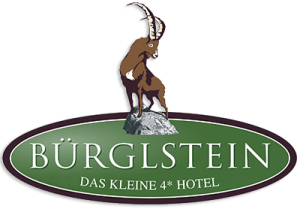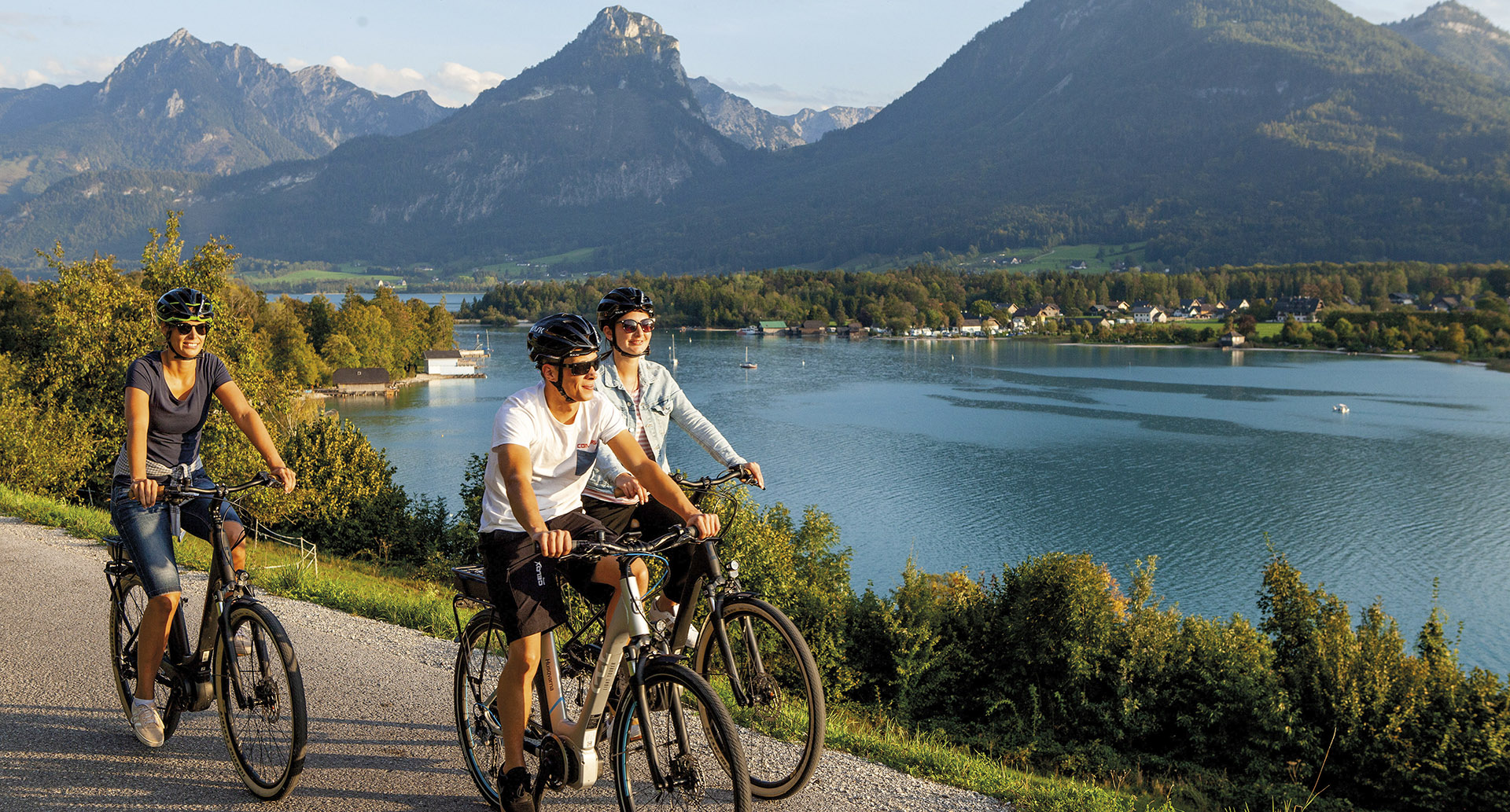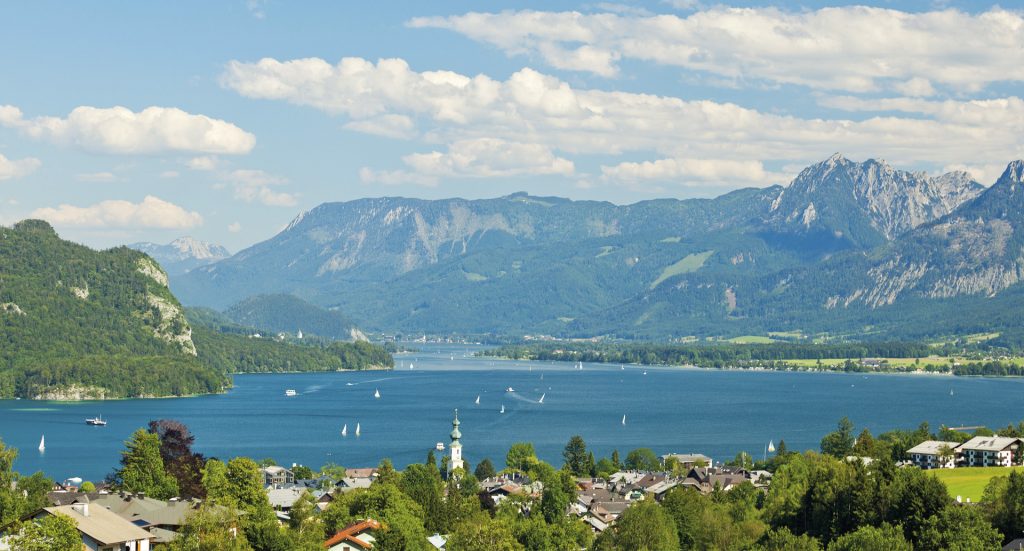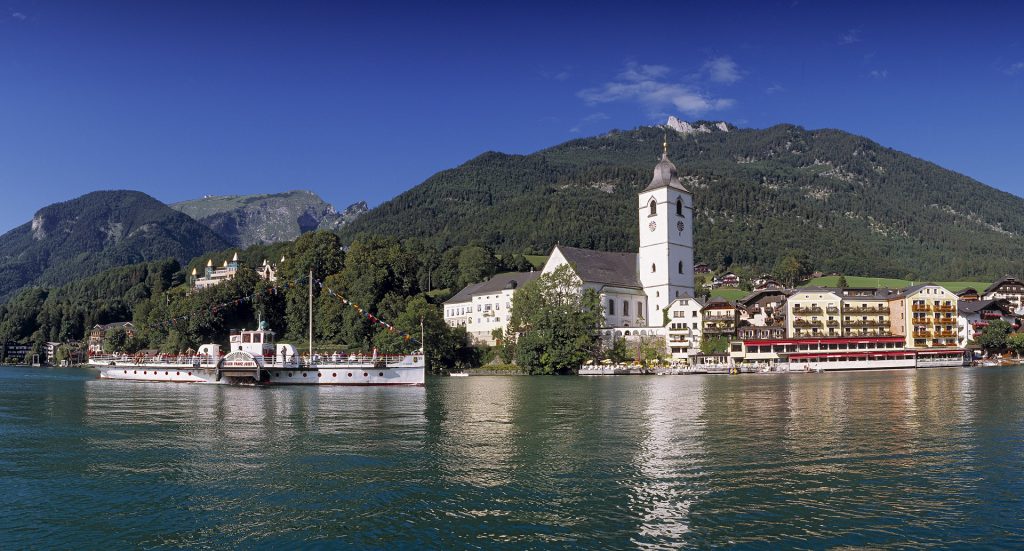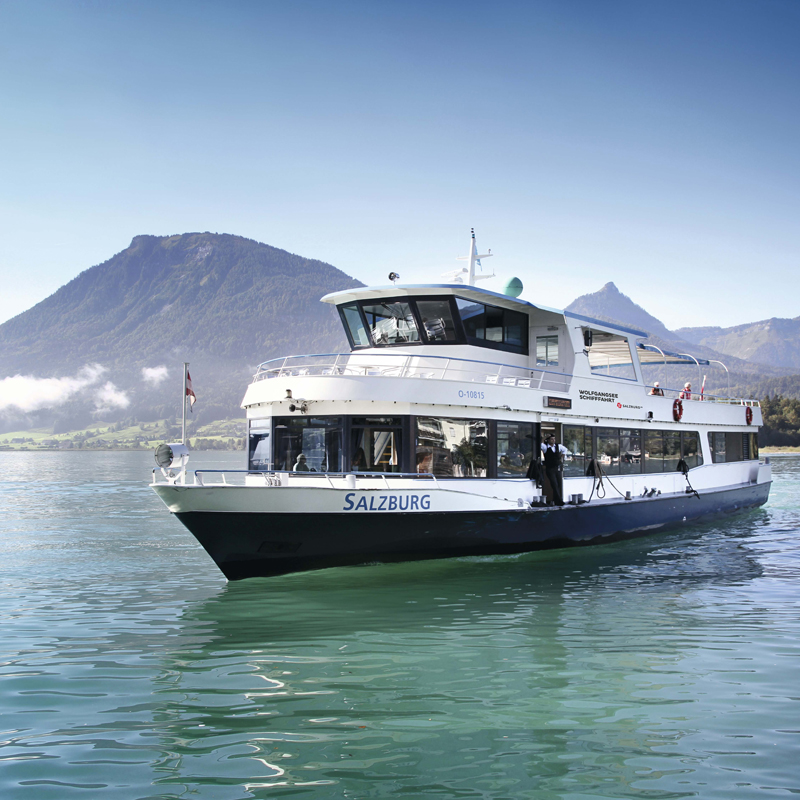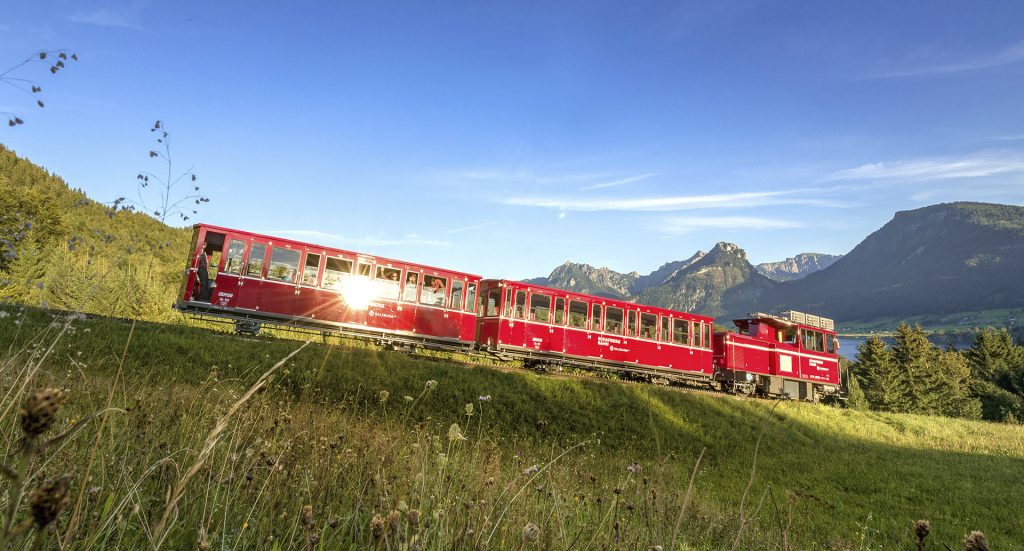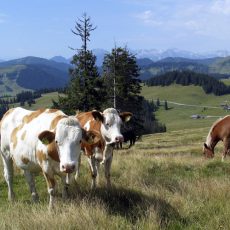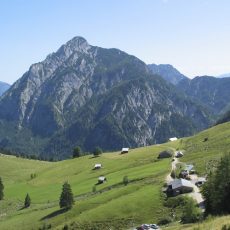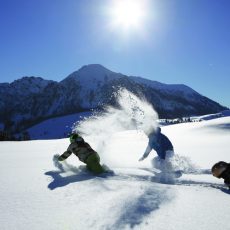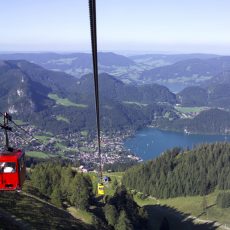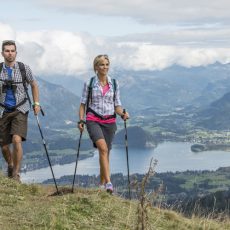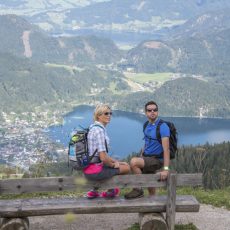St. Wolfgang is named after it’s founder – holy Saint Wolfgang. He was consecrated as Bishop of Regensburg in the year of 973 before retreating to the then called Abersee to avoid political problems in Bavaria. He lived as a hermit on Falkenstein for a couple of years, the devil was with his godly life and decided to kill the Saint by pushing the rocks together and crushing him. The holy Saint leaned against the rocks and prayed to god, leaving a mark of his head and hands in the stone which you can still see today.
The legend claims that the holy Saint threw his axe from Falkenstein into the valley, god told him he had to build a church at the spot where he would find his axe again. On the site of today’s church of St. Wolfgang he found his axe and built a chapel.
The devil offered help to construct the church, in return he demanded the first living thing entering the church to be his, Wolfgang outsmarted the devil, sending in a wolf as first visitor. Out of anger the devil left. When Wolfgang finally had to return to his bishop’s city, the little church wanted to follow him. But he ordered it to stay and promised that he would give the richest graces of heaven to all who prayed to him.
Due to his miraculous work, Wolfgang became a much-venerated saint.
With Rome, Einsiedeln and Santiago de Compostela – St. Wolfgang created the top quartet of European pilgrimage sites.
Up to seventy thousand pilgrims visited the saints church – as a symbolic purpose and to thank Wolfgang the pilgrims drop peas into a little jar – afterwards the peas were counted to determine the number of visitors. During the age of enlightenment and the secularization of religious customs the pilgrim town fell into a winter’s sleep – things worsened as a big fire destroyed the village in 1429. In 1430 the emperor Sigismund conferred St. Wolfgang to be a market community, during this time the gothic hall church was constructed and in 1481 Michael Pachers masterpiece was finished.
After being a thriving community, the end of pilgriming brought harsh times upon the community. Only through discovering the Salzkammergut by writers and painters of the Biedermeier period brought back the attention to St. Wolfgang.
After emperor Kaiser Franz Josef resided at Bad Ischl in the 19th century, St. Wolfgang profited and got more popular during the summer months.
In April of 1892, 350 Italian workers commence with tassuring work for the Schafbergbahn. Since 1893 the rack railway connects the valley with the popular mountain at a height at 1783 metres. Within 45 minutes it endures a track of 5.85km and climbs 1190 altimeter.
Further pioneering achievements for tourism were the commissioning of motorized shipping on Lake Wolfgang in 1874 and the construction of the Upper Austrian power station.
During the interwar period, Lake Wolfgang became a summer refuge for many artists from all walks of life and a summer resort for personalities from politics and business.
In 1937 the duke of Windsor, former King of England spent almost 2 months in St. Wolfgang in the famous “Landhaus zu Appesbach” with his later wife Wally Simpson.
A “day of fate” for the tourism on Lake Wolfgang was on November the 8th in 1930. Ralph Benatzkys revue operetta “Im Weißen Rössl” got sounding results on its debut in Berlin. Hundreds of presentations in London and on the Broadway marked the starting point for the most successful tourism-campaign of all time.
The film also acted. The back then popular homeland-films and musicals where Lake Wolfgang offered the best landscape, the movie “Im Weißen Rössl” filmed in 1960 with Waltraud Haas and Peter Alexander is still watched today.
After 1945 the freedom of traveling established slowly but surely, reviving the town and becoming one of the most popular destinations of the alps. With the decrease of mass tourism, the town took action and improved their touristic infrastructure such as the tunnel opened in 1993 and the construction of the Michael Pacher house in 1997, the design of the town itself because of the national exhibition in 2008 and major private initiatives, St. Wolfgang recommends itself as modern summer and winter destination with a long living tradition for heritage.
